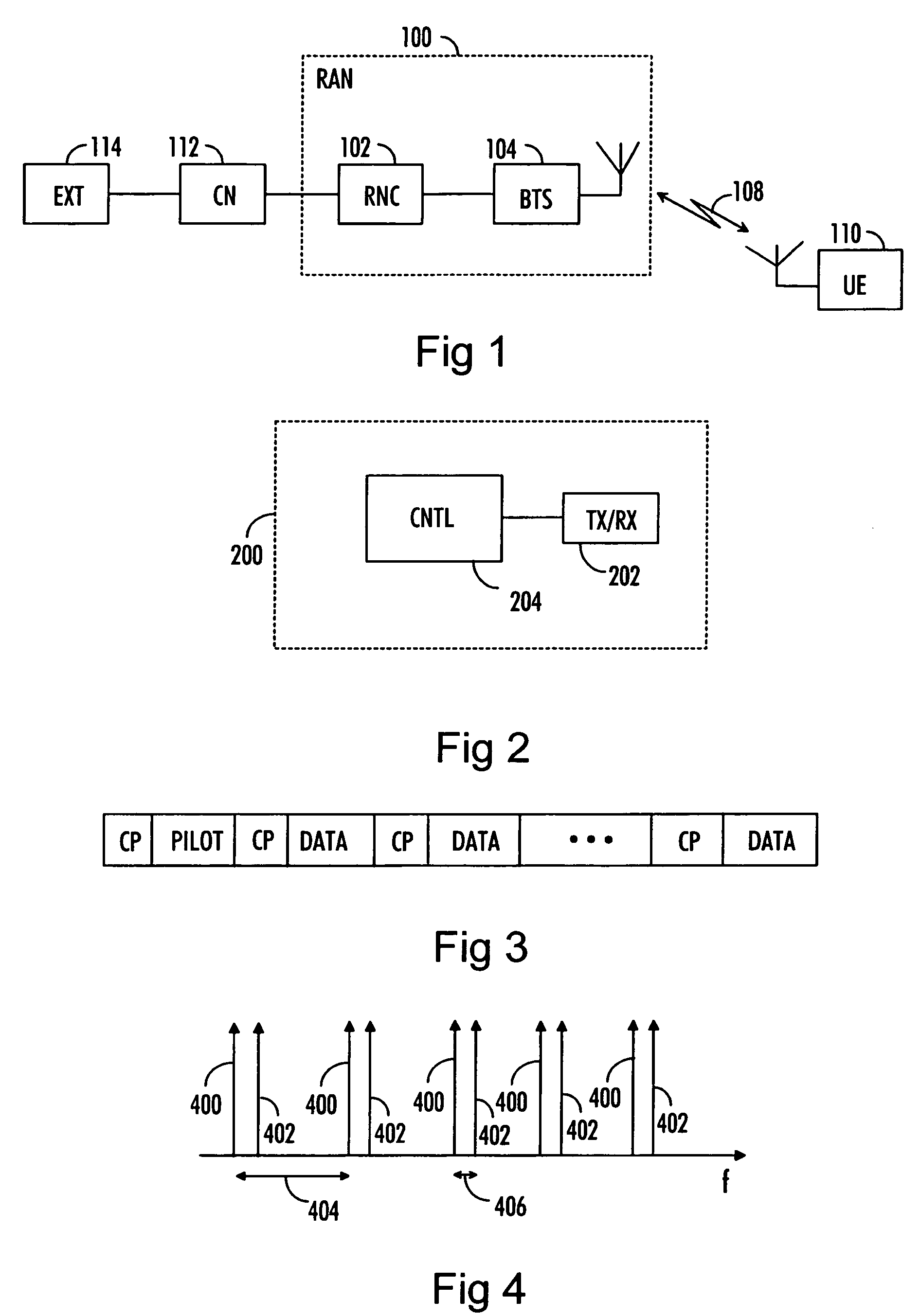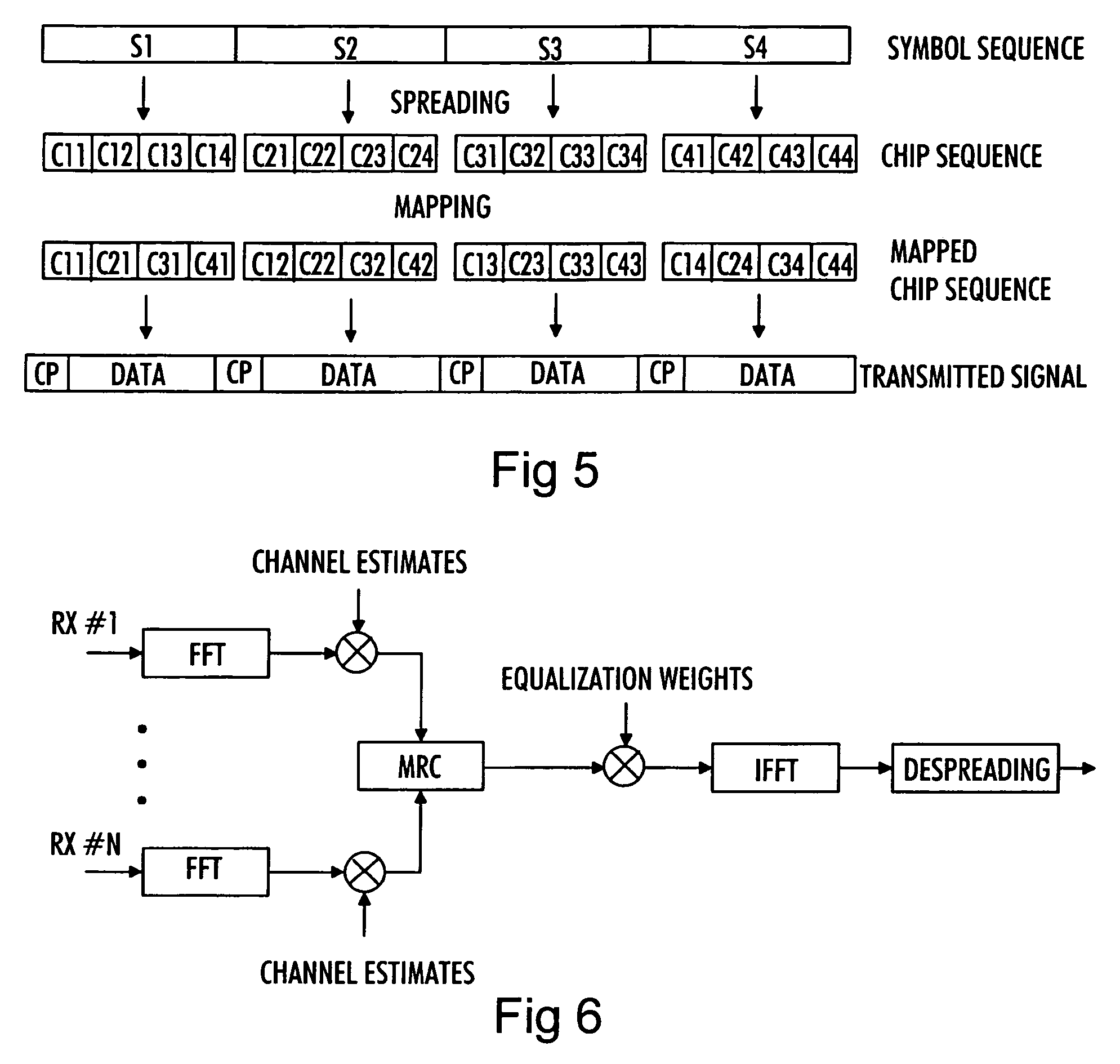Radio access scheme in CDMA-based communication system
a radio access and communication system technology, applied in the field of radio access schemes, can solve the problems of reducing affecting the performance of the receiver, and limiting the frequency of the conventional code division multiple access (cdma)-based communication system, so as to improve the cross-correlation properties of the spreading code, mitigate multiple access interference, and mitigate multiple access interferen
- Summary
- Abstract
- Description
- Claims
- Application Information
AI Technical Summary
Benefits of technology
Problems solved by technology
Method used
Image
Examples
Embodiment Construction
[0023]With reference to FIG. 1, examine an example of a data transmission system in which embodiments of the invention may be applied. The structure and the elements of the system illustrated in FIG. 1 are the same as in the Universal Mobile Telecommunication System (UMTS) network, but it should, however, be noted that the implementation of the proposed radio access scheme is not limited to the UMTS system but may also be implemented in another code division multiple access (CDMA) based telecommunication system in which orthogonal spreading codes are used for separating data of a plurality of user entities.
[0024]The network elements of the communication system of FIG. 1 can be grouped into a radio access network (RAN) 100 that handles all radio-related functionalities of the system and a core network (CN) 112, which takes care of switching and routing of calls and data connections to external networks 114. An external network may be for example the Internet, Integrated Services Digi...
PUM
 Login to View More
Login to View More Abstract
Description
Claims
Application Information
 Login to View More
Login to View More - R&D
- Intellectual Property
- Life Sciences
- Materials
- Tech Scout
- Unparalleled Data Quality
- Higher Quality Content
- 60% Fewer Hallucinations
Browse by: Latest US Patents, China's latest patents, Technical Efficacy Thesaurus, Application Domain, Technology Topic, Popular Technical Reports.
© 2025 PatSnap. All rights reserved.Legal|Privacy policy|Modern Slavery Act Transparency Statement|Sitemap|About US| Contact US: help@patsnap.com



